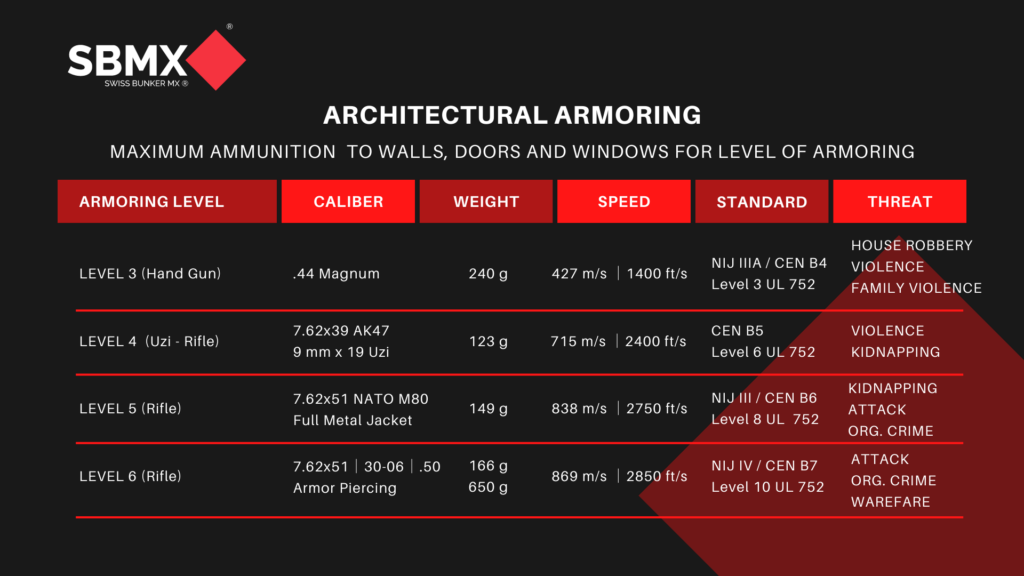They are underground shelters. In regular conditions, the upper concrete slab is 0.60 to 1.20 m deep from the ground surface, reaching construction depths of up to 4.50 m.
Their design is based on Swiss standards, and they are classified in 2 types, CBRNE SHELTER (Type E) and FALLOUT SHELTER (Type F).
CBRNE SHELTER (Type E): Designed and armored to withstand explosions from conventional ordnance to near and far nuclear explosions, it withstands pressures from 1 to 3 bar. This type of shelter is airtight to create a toxic-free zone inside. CBRNE shelters are equipped with air supply and filtering systems imported from Switzerland or Israel to breathe safely inside, and an overpressure is created inside that serves as a barrier to prevent contaminated air from entering the shelter through small openings in the walls of the structure.
It can withstand the detonation of a nuclear bomb similar to those dropped on Hiroshima and Nagasaki from as close as 1,000 meters away. It can also have anti-vandalism attributes, shielding, secret entrance or camouflage, emergency exit, which allow the infrastructure to be used for threats related to high insecurity.
FALLOUT SHELTER (Type F): It is a shelter that protects against chemical and biological attacks, radioactive fallout from distant nuclear explosions, radiological accidents (e.g. Laguna Verde). They are equipped with air supply and filtering systems for safe breathing inside, and an overpressure is created inside that serves as a barrier to prevent contaminated air from entering the shelter through small openings in the walls of the structure. It can also have anti-vandalism attributes, shielding, secret entrance or camouflage, emergency exit, which allow the infrastructure to be used for threats related to high insecurity.
A fallout shelter does not have capacity for near blast, but making this type of fallout shelter a very affordable option in economic terms, and it is convenient its location outside to 15 km (9.5 miles) minimum from downtown of main capitals of most important cities around the world. AS LONG AS THE DETONATION IS IN THE CENTER OF THE CAPITAL.
In both cases, their design will depend on the client’s request, the geographic location and the threats to be countered, both are appropriate to the present and future events of the 21st Century.


